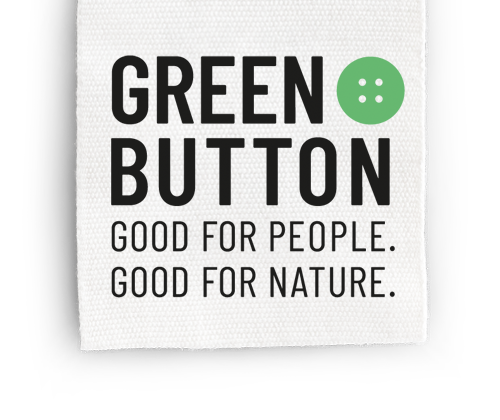Tips for sustainable consumption
Whether it’s borrowing, swapping, second-hand shopping or paying attention to sustainability - there are many ways to make your own consumption behaviour more conscious.
Together for more sustainability
Use your power as a consumer
How to easily do something for the environment and for our fellow human beings?
Both is possible when buying textiles! But how? By working together to ensure that sustainably manufactured textiles in line with social and environmental criteria make it onto the shelves of your favourite shops.
Actively ask about the manufacturing conditions of your clothes. Many companies already offer textiles that have been produced in a socially and ecologically sustainable way. The Green Button identifies these textiles and gives you a reliable orientation for responsible shopping.
A sustainable wardrobe – this is how it’s done
Tips for the responsible handling of textiles
- Favorite items need good care: Pay attention to the washing instructions so that textiles stay nice for a long time. Do not wash too hot or too often. Single stains can be washed out by hand if necessary.
- Broken pieces can be mended: Buttons can easily be sewn back on; the internet offers numerous tutorials for this. More complicated sewing work can be done by a tailor, and worn-out knuckles can be shod by a cobbler.
- Swap or buy second-hand: Did you know that clothes are only worn four times on average before they are discarded? That is why you can often find pieces in good condition for a good price at swap meets and second-hand shops.
- Buy more selectively: We do not wear around 20% of our clothes. Therefore, before every purchase, ask yourself: Do I really need this? Will I still like it in a year's time and can I combine it well?
- Take into account sustainability criteria when buying: Ask for the Green Button in the shop! The Green Button is a good choice. The government-run certification label shows which textiles are manufactured sustainably and in line with social and environmental criteria.
- Too good for the bin: Every year, around 1.35 million tonnes of used textiles and shoes are accumulated in Germany from private households alone. Clothing stores and social institutions are happy to take what is in good condition, but the rest has to go for textile recycling.

Do you know the impact of the textile industry on people and the environment?
Test your knowledge here!
A lot of valuable work and resources go into our clothes. Around 75 million people work in the textile industry so that we can dress entirely according to our own style. They deserve respect and a job with safe working conditions and a decent wage. Even though this seems self-evident, unfortunately, in many producing countries this is still not the reality. The environment also suffers from the effects of the fashion industry: from intensive water consumption, air pollution from greenhouse gases or the use of hazardous chemicals in the manufacturing process.
What is the percentage of women in the garment and textile sector?
Figures & Facts
80% of workers in the garment and textile sector are women.
Every third female textile worker in Cambodia has been sexually harassed, according to a survey by the aid organisation Care International.
Source: Textilbündnis (2020), Care International (2017)
What are the working conditions like for women in the textile industry?
Figures & Facts
Women often have only informal contracts.
This means they are not entitled to social benefits such as health care, paid sick leave or maternity leave, unemployment or pension benefits.
Source: Labour behind the Label
What is the health condition of the workers in the textile factories?
Figures & Facts
Many workers are malnourished or undernourished and often suffer from chronic overwork.
In some production steps, they are also exposed to chemicals that are harmful to their health, e.g. in the processing of textile.
Source: Worker Rights Consortium Report (2020)
How much water does the production of a cotton T-shirt require?
Figures & Facts
2.720 litres are needed to produce a cotton T-shirt.
100 billion cubic metres of water are used annually for the production of textiles. That is 4% of global water consumption.
Source: waterfootprint.org, Ellen MacArthur Foundation (2017)
How high is the greenhouse gas emissions scrap in the textile industry?
Figures & Facts
10% of global greenhouse gas emissions are caused by the garment industry.
This is more than the emissions of all international air travel and shipping combined.
Source: Ellen MacArthur Foundation (2017)
Microplastics in the oceans - how much is caused by the textile sector?
Figures & Facts
20 - 30% of the microplastic in the world's oceans is caused by the textile sector.
Washing synthetic fabrics causes microfibres from textiles, among other things, to enter the oceans.
Source: International Union for Conservation of Nature (2017)

